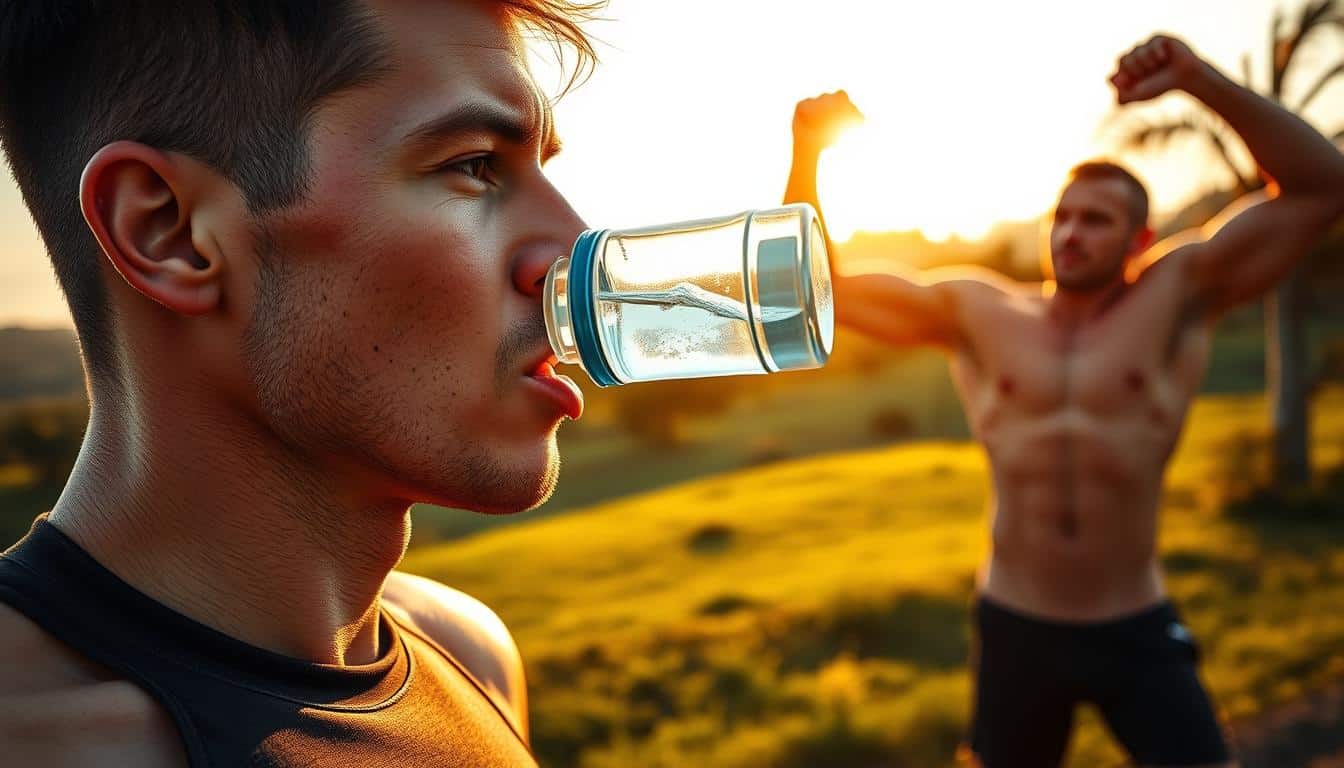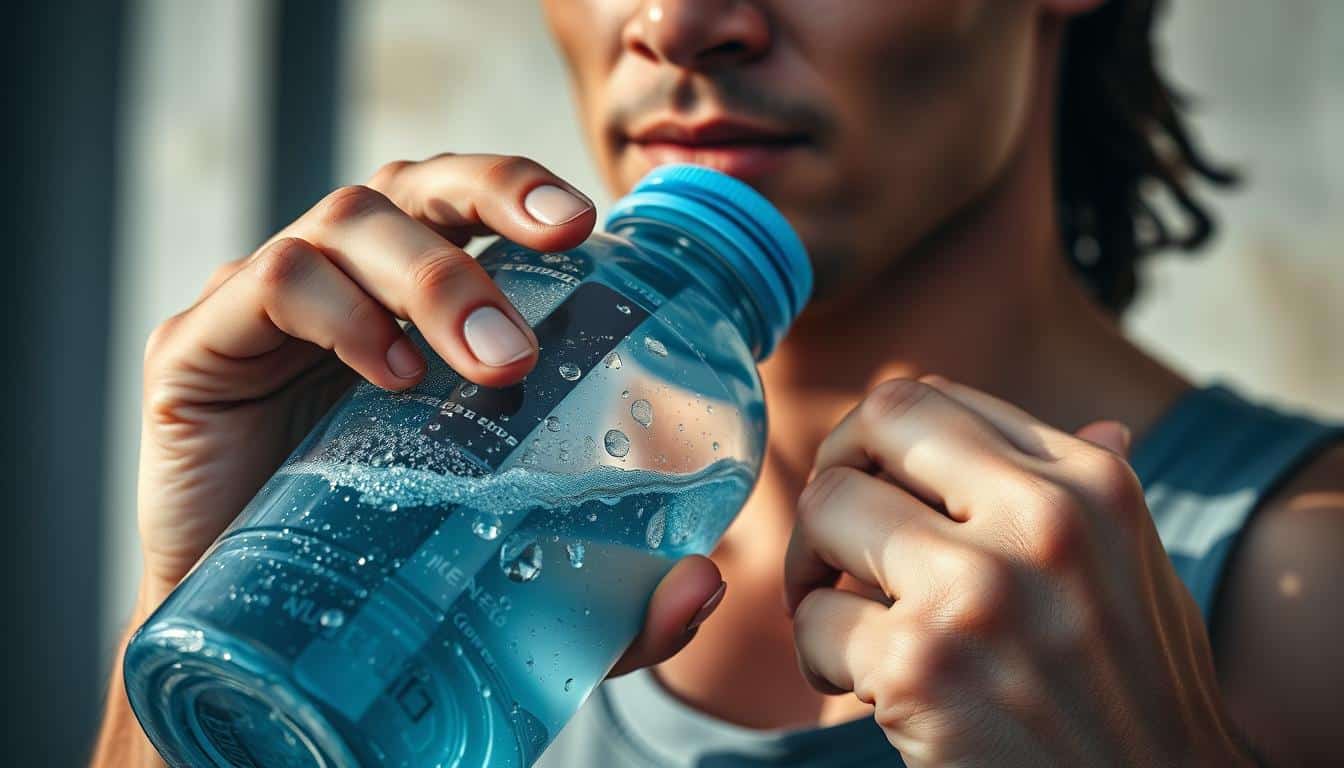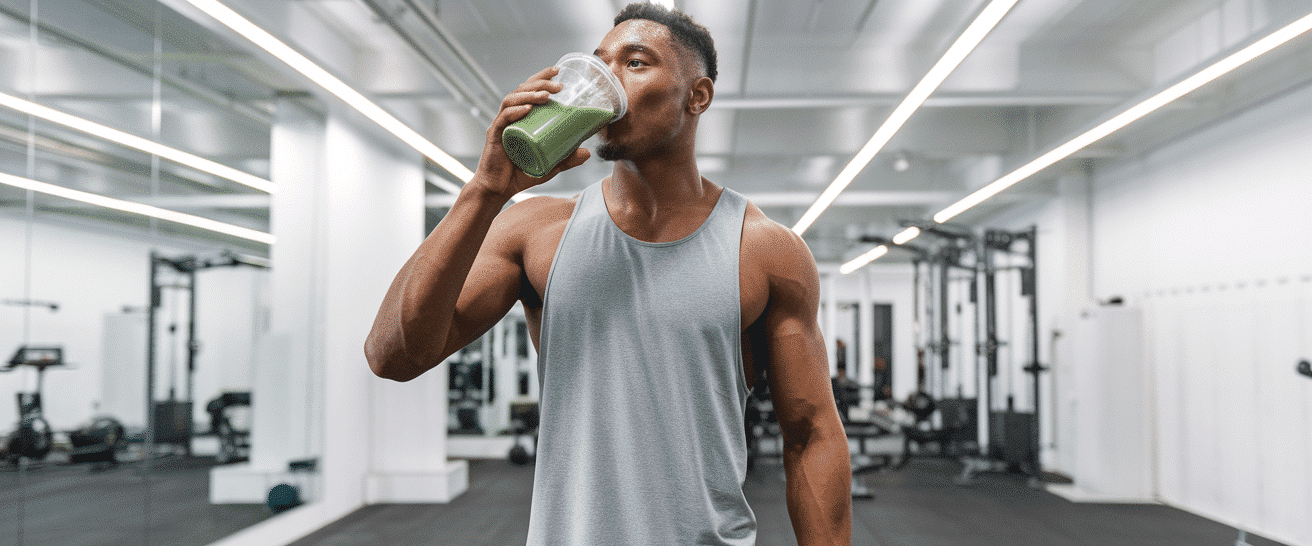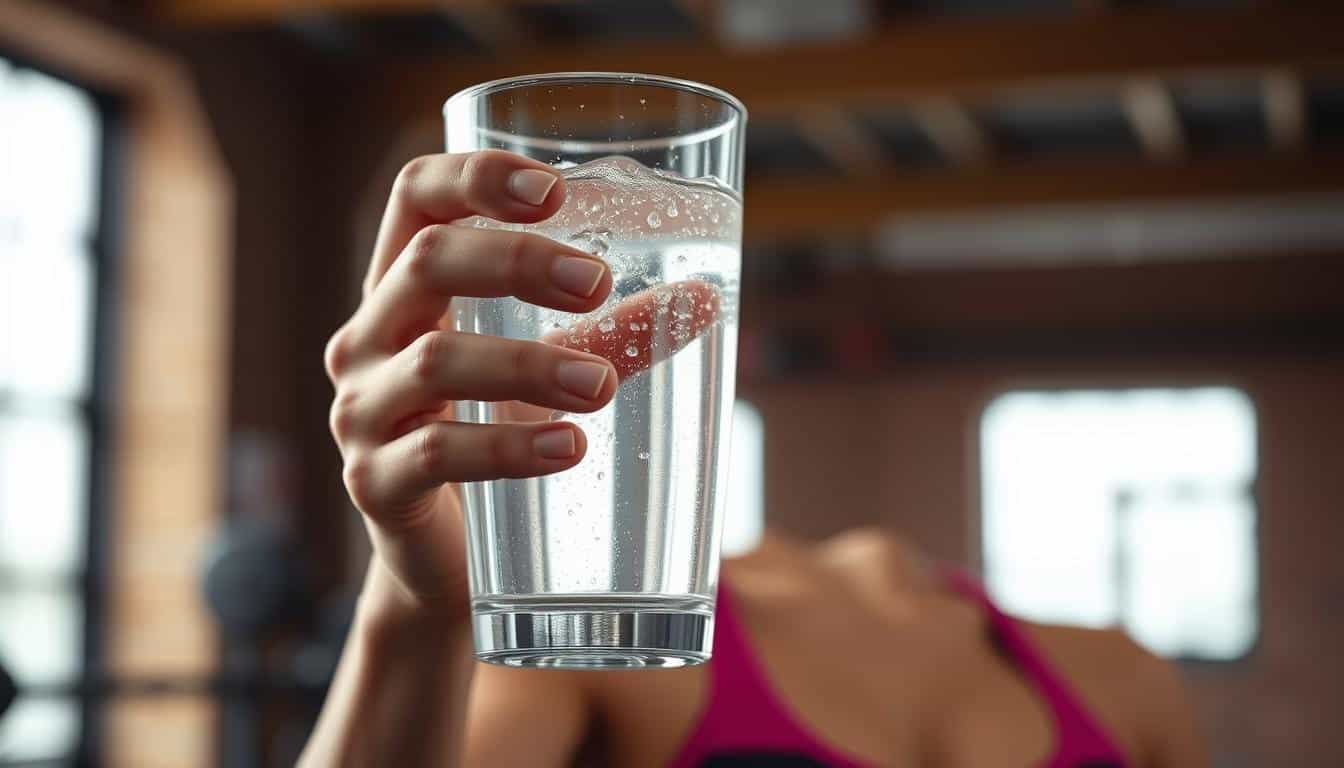Did you know losing just 2% of your body weight in fluids can slash workout performance by 20%? That’s like draining a water bottle’s worth of sweat and suddenly struggling to finish sprints you’d normally crush.
Your body runs on hydration like a car needs gas. When you train, every breath and bead of sweat chips away at your fluid reserves. Thicker blood means less oxygen reaches your muscles – like trying to pump maple syrup through a straw instead of water.
I’ve seen athletes stumble through practices thinking they’re just tired, when really, their cells are screaming for H2O. The fix isn’t complicated, but it does require strategy. Forget chugging gallons blindly or counting sips between sets.
This guide cuts through the noise with science-backed solutions. You’ll discover how to:
- Track fluid needs without math headaches
- Spot dehydration before it derails your workout
- Time intake for maximum energy during training
No lab coats required – just straightforward advice that keeps you moving stronger, longer. Let’s turn hydration from a guessing game into your secret performance weapon.
Understanding Hydration and Athletic Performance
Your body works like a high-performance engine during exercise – and water is its premium fuel. Every movement relies on fluid balance, from knee bends during squats to quick decisions during game time.

Your Body’s Liquid Team Players
Water keeps joints moving smoothly, like oil in a bicycle chain. When you’re properly hydrated, your knees and elbows bend without friction during jumps or serves. Blood becomes a superhighway, rushing oxygen to muscles and carrying away waste products that cause soreness.
Your brain needs fluid to stay sharp. That 80% water content helps you react faster to opponents’ moves and maintain coordination. I’ve watched players make smarter passes simply by sipping between quarters.
When Fluids Fall Short
Dehydration thickens blood, forcing your heart to work overtime. Muscles cramp as toxins build up, and your cooling system sputters. Many common hydration myths trick athletes into waiting for thirst signals – but by then, you’re already playing catch-up.
Proper fluid levels help sweat evaporate efficiently, preventing overheating during summer practices. They also maintain nutrient delivery to tired muscles, letting you push through final reps. Remember: clear thinking and explosive power both start with what’s in your bottle.
how much water should athletes drink daily
Think your water bottle’s enough? Think again. Baseline needs differ wildly from what your training demands. Let’s break down the numbers without turning it into a math class.

Foundational Fluid Targets
Most adults require 11-15 cups daily, but that’s just the starting line. Active bodies burn through reserves faster – like leaving your car idling versus racing it. Women training regularly might need 50% more than standard guidelines, men even higher.
Tailoring to Your Effort
Three key factors dictate extra needs:
- Sweat volume (check your shirt post-workout)
- Workout duration (90 minutes vs. 20)
- Environment (indoor AC vs. desert heat)
Track losses by weighing yourself before/after sessions. Every pound dropped equals 16 oz needing replacement. Endurance days? Add electrolyte-rich options with 200mg sodium per 16oz serving.
Your body’s thirst signals lag behind actual needs. Drink early, drink often – especially when pushing limits. Remember: optimal hydration isn’t fixed. It dances with your daily grind.
Practical Hydration Tips for Athletes
Your sweat sessions deserve smarter hydration habits. Let’s transform your fluid strategy from reactive to proactive with routines that stick.
Daily Hydration Routines and Monitoring
Build your day around these hydration checkpoints:
| Timeframe | Fluid Intake | Purpose |
|---|---|---|
| Pre-Training | 17-20 oz water | Prime muscles & joints |
| During Exercise | 4-8 oz every 15-20 min | Maintain performance |
| Post-Workout | 24 oz per pound lost | Rebalance fluids |
Carry a marked bottle to track consumption. Set phone reminders if you tend to forget sips between meetings or classes. Your urine color tells the real story – aim for pale lemonade, not apple juice tones.
Pair these habits with proper nutrition strategies for maximum energy. Weigh yourself before/after intense sessions – that number difference shows exactly what your body used.
Three simple monitoring tools:
- Clear portable bottle with ounce markers
- Morning/evening weight checks
- Bathroom breaks as hydration report cards
Consistency beats perfection. Start with one new habit this week, like pre-training ounces or post-workout weigh-ins. Your body will thank you during those final reps.
Electrolytes and Sports Drinks: What to Choose
Ever wonder why water alone sometimes leaves you feeling drained mid-workout? Your muscles need more than H2O to fire at full power. That’s where electrolytes step in – your body’s spark plugs for peak performance.
Benefits of Electrolytes During Exercise
Electrolytes like sodium and potassium act as your body’s electrical system. They help muscles contract smoothly and prevent cramps during long sessions. Sodium specifically boosts fluid absorption – think of it as a hydration multiplier.
Research shows athletes exercising over 45 minutes benefit most from electrolyte drinks. Your sweat drains salt reserves faster than other minerals. Without replenishing, you risk fatigue, headaches, and reduced endurance.
Comparing Water, Sports Drinks, and Alternative Beverages
Not all drinks fuel workouts equally. Use this guide to choose wisely:
| Beverage Type | Best For | Key Features |
|---|---|---|
| Water | Short sessions <45 min | Zero additives, quick hydration |
| Sports Drinks | Intense training >45 min | 200mg sodium/16oz + carbs |
| Coconut Water | Light recovery | High potassium, low sodium |
Isotonic drinks match your blood’s balance for mid-workout use. Hypertonic options work best post-training. Skip the marketing hype – homemade versions with salt and citrus often work just as well.
Remember: Test new beverages during practice. Competition day isn’t the time for surprises. Your bottle’s contents can make or break those final reps.
Hydration for Special Athlete Populations
Not all athletes hydrate the same way – age and activity level rewrite the rules. While general guidelines work for many, some groups face unique challenges requiring tailored strategies.
Unique Challenges Across Ages
Mature competitors face higher dehydration risk due to natural changes. Bodies hold 10-15% less fluid after 50, thirst signals weaken, and kidneys process liquids slower. I’ve seen seasoned marathoners collapse not from exhaustion, but from overlooked hydration needs.
Twice-daily training demands precision. Football players doing morning drills and evening practices should drink 1.5x their sweat loss between sessions. Weigh-ins become crucial – losing 2% fluid equals adult dehydration, while kids hit that mark at 1%.
Puberty transforms teenage hydration needs. Sweat production spikes as hormones shift, requiring extra electrolytes during growth spurts. Pregnant athletes balance their own needs with fetal development, making consistent sipping essential.
Three groups needing custom plans:
- Athletes over 50 prioritizing preemptive drinking
- Teens navigating puberty-related sweat changes
- Double-session trainers managing rapid fluid turnover
Work with a sports nutritionist if you fit these profiles. Your bottle strategy should evolve with your body and training demands – because peak performance doesn’t come in one size.
Conclusion
Your hydration journey doesn’t end here – it evolves with every training session. Thirst means you’re already behind, so sip before your brain sounds the alarm. Remember, fruits like watermelon and veggies like cucumbers boost fluid intake naturally, contributing nearly 20% of daily needs.
Personalize your approach using urine color checks and sweat-rate calculations. Coffee lovers rejoice – your morning brew hydrates similarly to water when consumed moderately. Balance electrolyte drinks with plain fluids based on workout intensity and duration.
Three keys to lasting success:
- Pre-hydrate before intense efforts
- Track losses through weigh-ins
- Pair fluids with sodium-rich snacks
Every athlete’s needs shift with age, climate, and activity type. What remains constant? Consistent hydration protects joints, fuels muscles, and sharpens focus when it matters most. You’ve got the tools – now go optimize your performance, one smart sip at a time.


